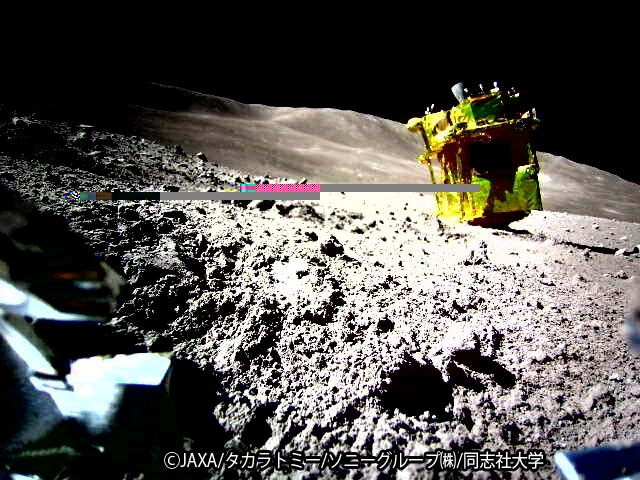JAXA says it has received all of the data about SLIM’s historic landing after having to power it off earlier this week.
Japan was successful in making an unusually precise moon landing just metres from its target, its space agency has announced.
The country on Saturday became the fifth to put a spacecraft on the moon when its so-called “Moon Sniper” lander touched down on the lunar surface.
On Thursday, the Japan Aerospace Exploration Agency [JAXA] said it had received all data about the landing of its Smart Lander for Investigating Moon (SLIM) probe within 2 hours and 37 minutes after the touchdown.
“We need a more detailed analysis of the data, but the accuracy of the ‘pinpoint’ landing was probably 3 metres to 4 metres [10 to 13 feet],” the lander’s project manager, Shinichiro Sakai, told a news conference.
The mission aimed to land within 100 metres (328 feet) of its target, bettering the conventional accuracy figure of several kilometres. The target was a crater where the moon’s mantle, a deep inner layer, is believed to be exposed on the surface.
JAXA also published its first colour images from the mission depicting the aircraft sitting at a slight angle on the moon’s rocky grey surface, with rising slopes in the distance.
One of the lander’s two main engines most likely stopped in the final phase of touchdown, leaving it in the angled position, Sakai said.
Despite the success, the mission was not without any issues.

JAXA said saying SLIM’s solar panels have been unable to generate electricity likely because they were angled wrong, expressing hope that a change in the sunlight’s direction could power it up again.
The agency had shut off its probe three hours after it landed to allow for a possible recovery of the craft. Before switching SLIM off, it was able to download technical and image data from the craft’s descent and the lunar surface.
JAXA hopes to learn more about the moon’s possible water resources through “vision-based navigation”, instrumental in building a base there one day as possible stopovers on the way to Mars.
Japan follows the United States, Russia, China and India in reaching the moon.
Its probe is part of several new lunar missions launched by governments and private companies, five decades years after the first human moon landing.
Japan has been expanding its space activities, even forging partnerships with the US to address China’s burgeoning military and technological influence.
The country is an active participant in NASA’s Artemis programme and aims to send one of its astronauts to the moon.
However, JAXA has faced multiple setbacks, including a launch failure in March of the new flagship rocket H3 that was meant to be competitive against others like SpaceX.
https://news.google.com/rss/articles/CBMibmh0dHBzOi8vd3d3LmFsamF6ZWVyYS5jb20vbmV3cy8yMDI0LzEvMjUvamFwYW4tbW9vbi1zbmlwZXItbWFrZXMtc3VjY2Vzc2Z1bC1waW5wb2ludC1sYW5kaW5nLXNwYWNlLWFnZW5jeS1zYXlz0gFyaHR0cHM6Ly93d3cuYWxqYXplZXJhLmNvbS9hbXAvbmV3cy8yMDI0LzEvMjUvamFwYW4tbW9vbi1zbmlwZXItbWFrZXMtc3VjY2Vzc2Z1bC1waW5wb2ludC1sYW5kaW5nLXNwYWNlLWFnZW5jeS1zYXlz?oc=5
2024-01-25 08:56:32Z
CBMibmh0dHBzOi8vd3d3LmFsamF6ZWVyYS5jb20vbmV3cy8yMDI0LzEvMjUvamFwYW4tbW9vbi1zbmlwZXItbWFrZXMtc3VjY2Vzc2Z1bC1waW5wb2ludC1sYW5kaW5nLXNwYWNlLWFnZW5jeS1zYXlz0gFyaHR0cHM6Ly93d3cuYWxqYXplZXJhLmNvbS9hbXAvbmV3cy8yMDI0LzEvMjUvamFwYW4tbW9vbi1zbmlwZXItbWFrZXMtc3VjY2Vzc2Z1bC1waW5wb2ludC1sYW5kaW5nLXNwYWNlLWFnZW5jeS1zYXlz
Tidak ada komentar:
Posting Komentar